IMSML Website Article 27/2023: Resolution MSC.263(84)/Rev.1 – Performance Standards and Functional Requirements for The Long-Range Identification and Tracking of Ships, Part 10 of 10 - Paragraph 15, 16 & 17, Administrations, Contracting Governments, Search & Rescue Services
This is the tenth and final part of a series of 10 articles on MSC.263(84)/Rev.1. The focus of today’s article is on Paragraph 15 (Administrations), Paragraph 16 (Contracting Governments) and Paragraph 17 (Search and Rescue Services) of the Performance Standards and Functional Requirements for The Long-Range Identification and Tracking of Ships.
Paragraph 15 - Administrations
LRIT Data Centre ships are required to transmit LRIT Information. Each ‘Administration’ (ie designated national regulator under the IMO legal regulatory system). Each Administration has the power to decide which of such ships shall be entitled to fly its flag, see Paragraph 15.1. By virtue of Paragraph 15.2, each ‘Administration’ is supposed to transmit the following details about the ship to the selected LRIT Data Centre:
[1] Ship’s name, see Paragraph 15.2.1;
[2] IMO Identification Number, see Paragraph 15.2.2;
[3] Call sign, see Paragraph 15.2.3;
[4] Maritime mobile service identity, see Paragraph 15.2.4;
[5] Type of ship, see Paragraph 15.2.5.
Note:
(a) If the ship is permanently taken out of service, similar information should be transmitted by the Flag State to the LRIT Data Centre, see Paragraph 15.5.1 to Paragraph 15.5.4.
(b) The same information also need to be transmitted to Application Service Providers (ASPs), see Paragraph 15.6
Under Paragraph 15.3, when there is a transfer of the flag of the ship which is required to transmit LRIT information from one State to another, the Administration where the ship is currently registered should pass, without undue delay, the following information to the selected LRIT Data Centre:
[1] The effective date and time of the transfer (Note: according to UTC), see Paragraph 15.3.1; and
[2] If known, the State whose flag the ship was formally entitled to fly, see Paragraph 15.3.2.
Note: For [1] and [2] above, the LRIT Data Centre should be updated without undue delay, when the changes occur.
Paragraph 16 - Contracting Governments
Paragraph 16.1 starts with identifying 6 major duties that Contracting States should do, in particular:
[1] Obtain LRIT Information which it is entitled to from the LRIT Data Centre, by selecting the LRIT Data Centre from which they wish to receive such information, in accordance with agreements with the LRIT Data Centre. Any change in information should be updated with IMO without undue delay, see Paragraph 16.1.1;
[2] If there is a wish to receive LRIT Information, the criteria for this should be indicated to the LRIT Data Centre. This may be done providing a standing order, see Paragraph 16.1.2;
[3] Important information that needs to be indicated to the LRIT Data Centre includes the distance from a port (see Paragraph 16.1.3.1), or a point in time (see Paragraph 16.1.3.2). If the standing order is a distance from a port, the Contracting Government may also have to inform the name of the port each ship is proceeding to, see Paragraph 16.1.3;
[4] Criteria for a standing order can also be given for receipt of LRIT information where the provision of LRIT information is indicated the distance from the coast of a Contracting Government, see Paragraph 16.1.4;
[5] Cooperation to resolve any issues arising from a particular ship as to which flag she is entitled to fly, see Paragraph 16.1.5;
[6] For all LRIT information which is no longer in use, ensure its destruction, or archiving in a secure and protected manner, see Paragraph 16.1.6.
Contracting Governments are obliged to communicate to IMO and ensure entry of information specified in Paragraph 11.2 (note: This information includes a list indicating the unique LRIT identities of each Contracting Government, the accompanying list of geographical coordinates on baselines, territorial waters) into the LRIT Distribution Plan. Afterwards, there is a duty to update the information whenever there are changes, see Paragraph 16.2.
In relation to ships located with the waters landward of baselines, Contracting Governments are advised that the LRIT system, would not apply any restrictions. This approach is also to be adopted for ships located within the territorial seas until communication has taken place with IMO, and the required information is provided in the LRIT Data Distribution Plan, see Paragraph 16.3.
Paragraph 17 - Search and Rescue Services
When a search and rescue service wishes to receive LRIT Information, it should indicate to the LRIT Data Centre the criteria for receiving such information, see Paragraph 17.1. LRIT Information can be requested by a search and rescue service, only via the LRIT Data Centre serving the Contracting Government (in whose territory the service is located), see Paragraph 17.2. Search and rescue services should provide information when requested by the LRIT Coordinator. This is to enable a holistic review of the performance of the LRIT system, and also for the investigation of any disputes, see Paragraph 17.3.
Thank you for reading IMSML Website Article 27/2023
Stay tuned for the next IMSML Website Article 28/2023: Resolution MSC.529(106) – Statement of Recognition of Maritime Mobile Satellite Services Provided by CTTIC Through BDMSS
Signing-off for today,
Dr Irwin Ooi Ui Joo, LL.B(Hons.)(Glamorgan); LL.M (Cardiff); Ph.D (Cardiff); CMILT
Professor of Maritime and Transport Law
Head of the Centre for Advocacy and Dispute Resolution
Faculty of Law
Universiti Teknologi MARA Shah Alam
Selangor, Malaysia
Wednesday, 4 October 2023
Note that I am the corresponding author for the IMSML Website Articles. My official email address is: uijoo310@uitm.edu.my
